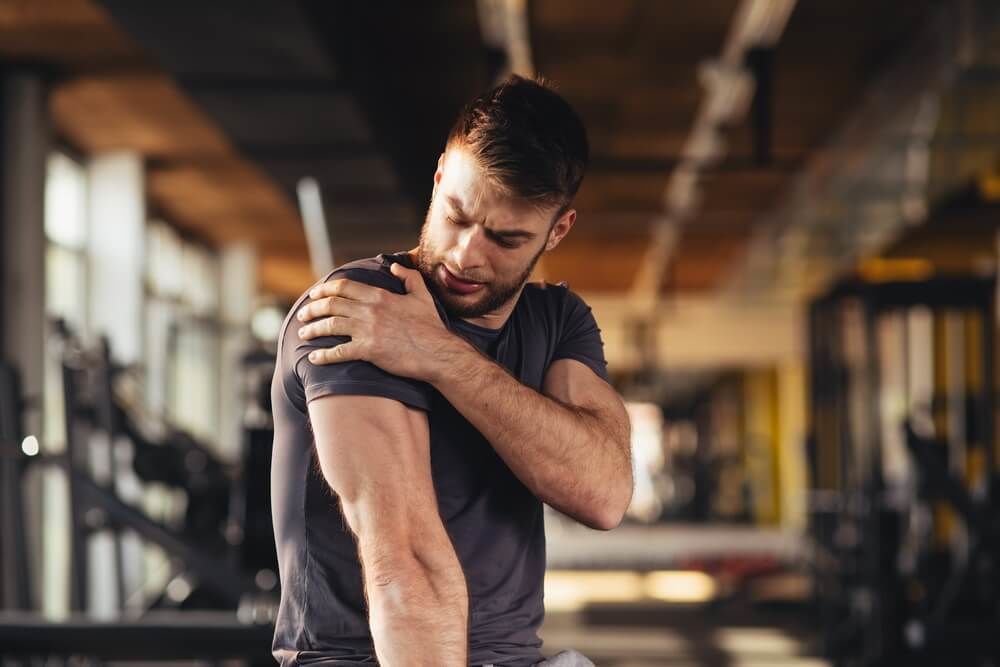Injuries sustained while working out at the gym are common. The most common areas injured at the gym are the shoulder and low back. Most injuries arise from a poorly designed gym program or poor technique while completing the exercises. A poorly designed or unbalanced shoulder workout, for example, often includes too many ‘push’ based exercises such as bench press and shoulder press, and not enough ‘pull’ based exercises such as a row. A program that includes too many ‘push’ based exercises and not enough ‘pull’ based exercises will often lead to shoulder and neck problems. ‘Push’ based exercises strengthen the muscles at the front of your shoulder and chest, such as your pecs, while ‘pull’ based exercises emphasize muscles at the back of your shoulder and upper back such as your rhomboids. A balance is required between the strength of the muscles at front and the muscles at the back of your shoulder and upper back. This allows correct movement of your shoulder without overloading any structures such as tendons and joints throughout your neck. A gym workout for your lower back involving squats and dead lifts should be avoided first thing in the morning. Overnight, the discs in our spine rehydrate or absorb water, so when we wake up our discs are ‘full’ and the pressure within the discs are high due to the extra fluid. Exercises such as squats and dead lifts performed first thing in the morning, have the risk of further increasing the pressure within these discs and may cause damage. To avoid this, leave any heavy lifting gym workouts until you have been ‘up and about’ for a couple of hours. Poor technique while completing exercises is the other common reason injuries are sustained at the gym. Two exercises that are often done poorly are the deep squat and bicep curl. To complete a deep squat with good technique, good flexibility is required of the muscles around the hip, such as your hamstrings. If you do not have the appropriate flexibility, you will be unable to maintain the correct posture in your lower back as you deepen the squat. As you squat lower, the tight muscles will cause your pelvis to tilt slightly backwards which increases the pressure throughout the discs in your lower back. If you do not have enough flexibility, only squat down to a point before you lose the normal posture in your lower back. Repetitive squats with poor technique may result in injury to the lower back or knees. Bicep curls are also often performed incorrectly. When performing a bicep curl, you should always have your shoulders back while squeezing between your shoulder blades. If you do not squeeze back, your shoulders will be in a forward or hunched position during the curl. Repetitive curls in this incorrect position will increase the load put through the rotator cuff tendons around the shoulder and may lead to injury. If you are unsure of your gym program, technique or which exercises would be best for you; your physiotherapist can advise you on these issues.

